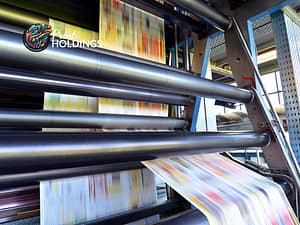 Navigating the World of Safety Workwear
Navigating the World of Safety Workwear
When it comes to workplace safety, no detail is too small. From safety helmets to safety shoes, every piece of safety workwear has a crucial role to play. But have you ever wondered about the standards and certifications behind these items? Let’s dive into this fascinating world.
Certifications and Their Importance
Certifications are essential for ensuring the quality and safety of workwear. They are seals of approval granted by official bodies after thorough testing and analysis. This guarantees that the safety workwear meets specific criteria and is fit for purpose.
Understanding Different Certifications
Different pieces of safety workwear have different certifications, depending on their intended use. Let’s delve into a few examples:
Safety Glasses Your Eyes’ Best Defense Against Workplace Hazards
Safety glasses, used in various industries, protect the eyes from hazards like dust, chemicals, or flying debris. They should comply with certain safety standards such as the ANSI Z87.1 in the US or EN166 in Europe, which define criteria for impact resistance, coverage, and optical quality.
Safety Shoes Sturdy Footwear for Maximum Protection
Safety shoes, designed to protect your feet from injuries, should adhere to the ASTM F2413 standard in the US, or EN ISO 20345 standard in Europe. These standards assess factors like toe protection, puncture resistance, and sole composition.
High Vis Vest Enhancing Visibility, Ensuring Safety
High visibility vests, or high vis vests, are common safety uniforms used to enhance visibility in low-light conditions. Standards like ANSI/ISEA 107 in the US and EN ISO 20471 in Europe specify requirements for color, retroreflection, and minimum areas.
Safety Helmets Your Ultimate Shield against Workplace Dangers
Safety helmets protect the head from falling objects, impacts, and electrical hazards. Standards such as ANSI Z89.1 in the US or EN397 in Europe ensure that these helmets offer adequate protection.
Importance of Following Standards in Safety Equipment
Beyond safety workwear, other safety equipment also follows specific standards. This includes everything from ear protection to respiratory equipment. By adhering to these standards, companies ensure that workers are adequately protected in various work environments.
Common Questions About Safety Workwear Certifications
Having gone through the science behind safety workwear standards, let’s address some less common but equally important questions that might be lingering in your mind. With the help of AA Safety, a recognized expert in the field, we’ll try to shed some light on these topics.
The Testing Journey of Safety Workwear
One question often asked is, “What specific tests do safety workwear items undergo to earn their certifications?” While the exact testing methods can vary based on the item and the certification in question, most tests are designed to simulate potential workplace hazards. For instance, safety glasses might be tested for resistance to impact or radiation, while safety shoes are typically checked for slip resistance and protection against crushing forces. AA Safety ensures all its products undergo rigorous testing to meet the necessary standards.
Keeping Up with Safety Standards
Another question we often hear is, “How often are safety standards updated, and how can I stay informed about these changes?” Safety standards are frequently reviewed and updated to account for new research findings and technological advancements. Subscribing to safety regulation newsletters, regularly visiting relevant regulatory body websites, or maintaining a relationship with a reputable safety workwear provider.
Evaluating Non-Certified Workwear
Lastly, we often get asked, “If I find safety workwear without certifications, does that automatically mean it’s unsafe to use?” Not necessarily. However, uncertified safety workwear hasn’t been officially tested and verified to meet specific safety standards. Using uncertified workwear could put you at risk. AA Safety advises against using uncertified safety workwear and only offers products that meet or exceed recognized safety standards.
In summary, the world of safety workwear is rich and complex, but with the right information and guidance, you can navigate it effectively. Remember, the primary function of safety workwear is to keep you safe, so make informed decisions and prioritize quality and compliance. As always, AA Safety stands by ready to help. Stay safe out there!





